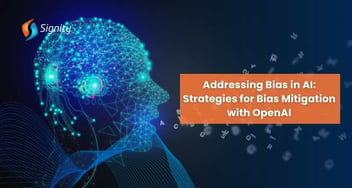Promoting Equity in AI: Achieving Fair Outcomes with OpenAI Language Models
Delve into promoting equity in AI with OpenAI Language Models. Learn steps to ensure fairness, including diverse training data, evaluation metrics, fine-tuning, and custom prompts. Explore practical code examples and OpenAI's ongoing efforts to enhance model fairness for a more inclusive AI ecosystem.

Artificial Intelligence (AI) plays a pivotal role in our daily lives, powering recommendation systems and aiding medical diagnoses. However, AI systems aren't immune to bias and can inadvertently perpetuate or worsen existing societal inequalities. To tackle this challenge, OpenAI is committed to enhancing the fairness of its language models, such as GPT-3.5. In this piece, we delve into the notion of fairness in AI and showcase methods for ensuring fairer outcomes using OpenAI language models along with practical code examples.
Understanding Fairness in AI
Fairness in AI pertains to impartiality, lack of bias, and equitable treatment of individuals or groups when employing AI systems. Bias can manifest in various forms, including biased training data, model architectures, or fine-tuning processes. To develop fair AI models, it's imperative to identify and mitigate these sources of bias.
Steps to Ensure Fairness
1. Diverse Training Data:
Bias often stems from the data used to train AI models. To address this, OpenAI endeavors to utilize diverse and representative datasets, thereby minimizing the chances of favoring any specific group.
2. Evaluation Metrics:
Assessing fairness is crucial. OpenAI employs multiple evaluation metrics like demographic parity, equal opportunity, and disparate impact to gauge the fairness of its models. These metrics aid in detecting potential biases in model outputs.
3. Fine-Tuning:
Fine-tuning plays a pivotal role in shaping the behavior of language models. OpenAI fine-tunes models across a diverse range of prompts to enhance their reliability and mitigate bias in their responses.
4. Custom Prompts:
Developers can leverage custom prompts to steer the behavior of language models. By carefully crafting prompts, one can solicit AI-generated content that aligns with specific guidelines, thereby circumventing problematic outputs.
Now, let's delve into some code snippets to illustrate how to interact with OpenAI's language models to ensure fairness.
1. Accessing OpenAI API:
Accessing OpenAI's language models is facilitated through their API. Begin by obtaining an API key from OpenAI and installing the 'openai' Python package:
import openaiapi_key = 'YOUR_API_KEY'openai.api_key = api_key |
2. Sending a Prompt:
To generate text from a language model, send a prompt:
response = openai.Completion.create( engine="text-davinci-003", prompt="Translate the following English text to French: 'Hello, how are you?'", max_tokens=50)translated_text = response.choices[0].textprint(translated_text) |
3. Guiding Model Behavior:
You can steer the model's behavior by being explicit in your prompts:
prompt = "Write a news article about climate change that presents both sides of the argument."response = openai.Completion.create( engine="text-davinci-003", prompt=prompt, max_tokens=150)article_text = response.choices[0].textprint(article_text) |
By providing clear instructions, one can ensure that the generated content adheres to ethical and unbiased standards.
Conclusion
Promoting fairness in AI is an ongoing endeavor, and OpenAI is actively enhancing the fairness of its language models.
Let's Embark on a Journey to AI Excellence Together
Our team is dedicated to building cutting-edge generative AI solutions that cater to your unique business requirements.
Developers can help achieve fairness by using varied training data, metrics, tuning methods, and custom prompts. The AI community must continue addressing bias and fairness concerns to foster a more just and inclusive AI ecosystem.


%201-1.webp)


.png?width=344&height=101&name=Mask%20group%20(5).png)

















